The content of the article
The summer period is not only a great time to relax, but also a large number of dangers, and especially for pets. The most urgent problem at this time is heat stroke in cats, because in the summer the temperature in the street sometimes reaches dangerous levels: 36-38 degrees above zero.
What is heat stroke?
To understand how you can help your pet with heat stroke, you must first understand what this phenomenon is.
Hyperthermia in cats is a condition that is also more commonly referred to as sunstroke. This condition is very dangerous for the animal, it is characterized primarily by an increase in the temperature of the cat's body, which arose against the background of excessively high air temperature in the street, as well as changes in humidity. In simpler terms, the animal becomes very hot. Typically, cats fight heat through licking, as well as deeper breathing. However, it is worth noting that such a cooling system is not ideal and ineffective.
Of great importance in this case is the fact that the body temperature of cats is, in principle, quite high and significantly exceeds the human body temperature. In healthy representatives of the feline family, body temperature reaches 39.2 degrees. As a result, it is much easier for cats to get heat stroke than for humans.
There is also an opinion that animals that are overweight are more susceptible to hyperthermia, both elderly cats and young individuals. In addition, animals with pathology of the respiratory tract are at risk. There is another opinion that cats of the Persian breed, as well as some representatives of exotic breeds, are more susceptible to thermal shock.
How to understand that an animal has heat stroke?
- An increase in the temperature of the skin. you can feel it by touching the animal, the skin becomes hot.
- The cat begins to breathe often and quite hard.
- Redness or, conversely, excessive pallor of the mucous membranes - this manifestation can be seen on the gums.
- the cat's tongue turns red;
- the animal is weak;
- the cat periodically loses coordination;
- the animal becomes restless;
- the cat may have a course of saliva;
- the animal can burp foam;
- sometimes cats have diarrhea;
- in an animal in a state of hyperthermia muscle twitching is observed;
- sometimes cats have a flow of blood from the nose.
How to provide first aid to an animal with heat stroke?
So, having noted the presence of the above signs of hyperthermia in your pet, you should worry about first aid to the animal. The main task of the owner in this case is to lower the body temperature. To do this, you first need to measure the rectal temperature.
If the rectal temperature of the pet does not exceed 40 degrees, it will be enough just to attach something cold to the animal’s head, and also wrap it in a damp cool towel. In addition, the following methods may provide additional assistance:
- the application of small compresses with alcohol on the legs of a pet;
- lowering the room temperature with an air conditioner or fan;
- keeping the animal in a cool room;
- providing the cat with cold and clean water.
When taking appropriate measures, it is necessary to monitor the body temperature of the animal and measure it every five minutes. This must be done in order to prevent hypothermia, that is, a strong decrease in body temperature.
After the cat's body temperature returns to normal, you should definitely visit a veterinarian with your pet. Even if outwardly the animal looks completely healthy, this does not mean that it really is. During hyperthermia, some internal organs of the pet may suffer, therefore it is important to conduct an examination to exclude the development of pathologies.
If, after measuring the rectal temperature, you find that the indicator on the thermometer exceeds 40 degrees, you must immediately show the animal to the veterinarian. In this case, only a specialist will be able to provide first aid correctly. After the doctor takes action, he will definitely advise you on further care for your pet. It is very important to follow all the recommendations of a specialist in order to prevent the recurrence of heat stroke and the development of other pathologies against the background of a weakening of the body.
After experiencing hyperthermia, it is necessary to monitor the urine of the pet, it is important to monitor the presence of blood inclusions in it. The fact is that, to a greater extent, during the heat stroke, the excretory system suffers, namely, the kidneys. The presence of blood in the urine may indicate the development of pathological conditions of the kidneys, which is also a serious reason for contacting a veterinarian and starting treatment.
How to protect your pet from heat stroke?
To protect your beloved cat from overheating or heat stroke, you should just follow a few simple rules:
- Do not leave your pet in any enclosed space. This is especially true for cars, enclosed rooms, carrying for cats.
- If your pet does not go outside and is constantly at home, in no case should he be denied access to the coolest places in the apartment. The animal feels when its body temperature rises, and therefore begins to look for cool places.
- It is important to control the presence of cool, clean water in the animal. If you leave home for a long time, you should leave a sufficient supply of water for your pet, and it is better to put a bowl of liquid in a cool place, protected from sunlight.
- It is necessary to avoid intense physical exertion for the animal. Moreover, you need to control this process, even in cases where the pet itself asks to run or play with it.
- If there is such an opportunity, you need to at least sometimes turn on the air conditioner or fan in the room. This will slightly reduce the temperature in the house, as well as ensure the circulation of cool air in the room. Since cats cool themselves, including deep breathing, this measure will be very useful.
Apparently, avoiding hyperthermia in a pet is quite simple. If your cat is constantly in your field of vision, you can easily control the air temperature in the room, preventing the cat from overheating. If the pet likes to walk outside, then in this case you should not worry too much, as cats are quite sensitive and easily understand when their body temperature becomes too high. If the street gets too hot for the animal, the cat will definitely find a cool place or come home to cool off, drink cool water and lie in a secluded place.
Video: how to help a cat in the heat

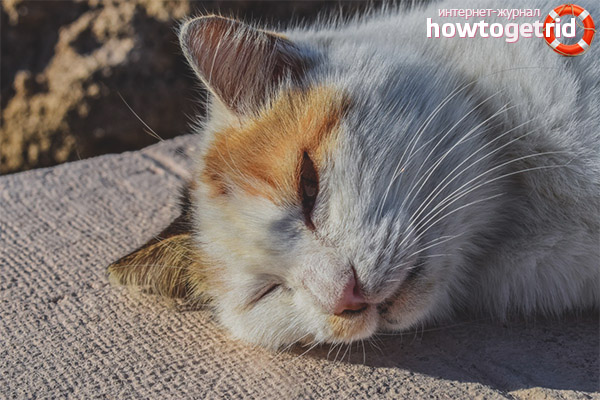






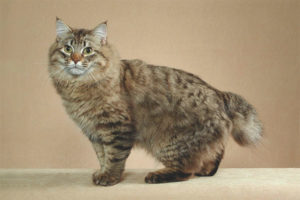
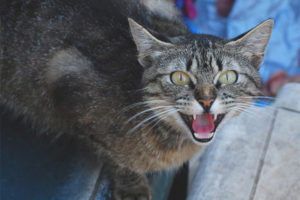
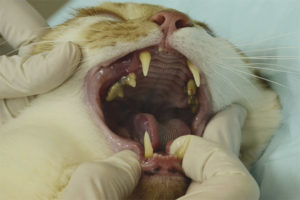
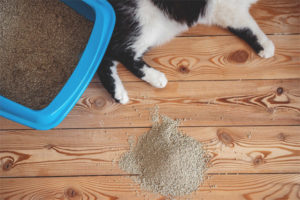
Submit